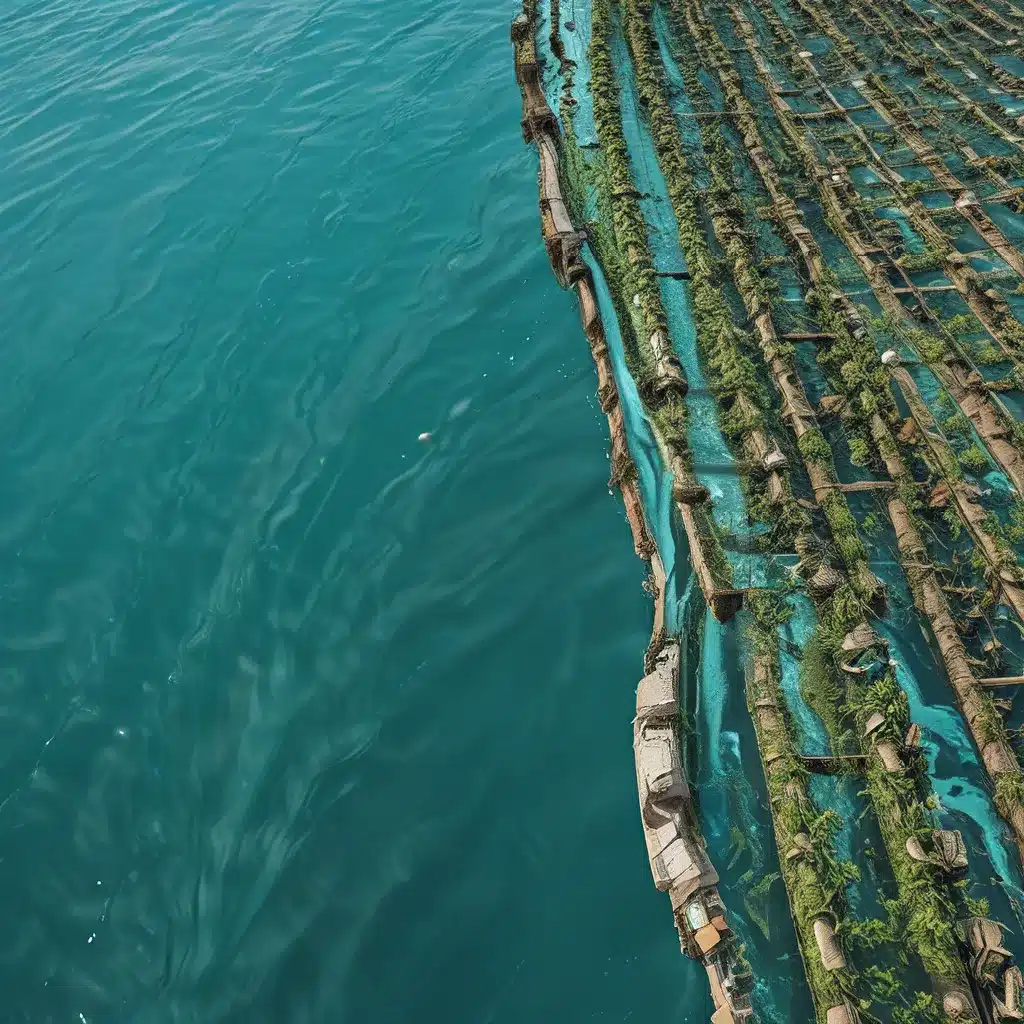
Diving into the Blue-Green Future: Reimagining Water Treatment and Beyond
“For some, the word ‘impossible’ ends discussions. For us, it’s a starting point.” – Northrop Grumman
If you had told me a decade ago that I’d be writing about the cutting-edge world of water treatment and environmental services, I probably would have laughed. But here we are, on the cusp of an aqua-driven revolution that’s poised to redefine how we approach sustainability, conservation, and technological innovation.
Uncharted Waters: Embracing the Impossible
As an environmental enthusiast, I’ve always been fascinated by the incredible feats of human ingenuity. But it’s only now, as I delve deeper into the realm of water treatment and environmental services, that I’m truly in awe of the breakthroughs happening all around us. It’s as if the impossible has become the new normal, and the teams behind these advancements are pushing the boundaries of what we thought was achievable.
Take, for example, the work of Northrop Grumman. This aerospace and defense giant has long been known for its trailblazing contributions to space exploration, military technology, and cutting-edge innovation. But their commitment to redefining the possible extends far beyond the realms of rockets and satellites.
Aqua-Powered Ingenuity: From the Depths to the Skies
Northrop Grumman’s teams are constantly questioning, problem-solving, and creating new ways to tackle seemingly impossible challenges. And when it comes to the world of water treatment and environmental stewardship, their influence is nothing short of remarkable.
Autonomous Underwater Vehicles (AUVs): Imagine a fleet of underwater robots, silently navigating the depths and gathering critical data about the health of our waterways. That’s precisely what Northrop Grumman has achieved with their advanced AUV technology. These autonomous vehicles can map the seafloor, monitor water quality, and even track the movements of marine life, all without the need for human intervention. It’s a game-changer for environmental researchers and conservation efforts.
Digital Defenses for Physical Assets: But Northrop Grumman’s expertise doesn’t stop at the water’s edge. They’re also at the forefront of developing cutting-edge digital solutions to protect our physical infrastructure, including water treatment facilities and distribution networks. By leveraging the power of digital engineering, artificial intelligence, and advanced data analytics, they’re helping to detect, identify, and thwart potential threats to these critical assets, ensuring the continued delivery of clean, safe water to communities around the world.
Redefining the Possible: From the Ocean to the Stars
As if their achievements in the aquatic realm weren’t impressive enough, Northrop Grumman’s teams have also made significant contributions to the exploration and understanding of our universe. The James Webb Space Telescope (JWST), for instance, is a marvel of engineering that was designed and built by the company. This cutting-edge observatory, which recently celebrated its first year of scientific operations, is revolutionizing our understanding of the cosmos, from the earliest galaxies to the mysteries of exoplanets.
But Northrop Grumman’s vision for the future doesn’t stop there. They’re also at the heart of NASA’s Artemis program, which aims to return humans to the Moon for the first time since the 1970s. And as they continue to push the boundaries of what’s possible in space, I can’t help but wonder how their innovative mindset and problem-solving prowess might translate to the challenges we face here on Earth.
Bridging the Gap: Aqua-Driven Disruption in Environmental Stewardship
It’s this very question that has me so excited about the future of water treatment and environmental services. Because if the teams at Northrop Grumman can overcome the seemingly insurmountable challenges of space exploration, then surely they can apply that same level of ingenuity and determination to the pressing issues we face on our own planet.
Already, we’re seeing glimpses of this aqua-driven disruption. Hyperspectral imaging, for instance, is being used to transform the way we monitor the health of our forests, enabling early detection of disease, drought, and other environmental stressors. And autonomous vehicle-mounted LIDAR technology is providing unprecedented insights into the layout and obstacles of urban environments, paving the way for more efficient and effective emergency response and disaster management.
Navigating the Uncharted: Embracing the Complexities of Environmental Stewardship
But of course, the challenges we face when it comes to environmental stewardship are far from simple. They’re often multifaceted, with numerous interconnected factors at play. And as I’ve delved deeper into this world, I’ve come to appreciate the importance of a nuanced, carefully balanced approach.
Acknowledging Uncertainty: One of the hallmarks of true scientific inquiry is the recognition that there is often more we don’t know than what we do. And in the realm of environmental science and technology, this sentiment rings especially true. That’s why the experts at Northrop Grumman and other leading organizations in this field are careful to present information with appropriate caveats and qualifications.
Embracing Complexity: The reality is that the natural world is a complex, ever-evolving system, and the solutions we develop to address environmental issues must reflect that complexity. Northrop Grumman’s teams, for example, are adept at using digital engineering, artificial intelligence, and advanced data analytics to tackle these multifaceted problems, drawing insights from a wide range of sources and perspectives.
Aqua-Driven Disruption: A Brighter Future Starts Today
As I consider the remarkable achievements and forward-thinking approaches of companies like Northrop Grumman, I can’t help but feel a sense of optimism about the future of water treatment and environmental stewardship. These are the sorts of organizations that are redefining the possible, pushing the boundaries of what we thought could be accomplished.
And while the challenges we face may seem daunting, I believe that this aqua-driven disruption is paving the way for a brighter, more sustainable tomorrow. By embracing the latest advancements in technology, science, and innovative problem-solving, we can tackle even the most complex environmental issues head-on, creating a future that is cleaner, greener, and more resilient than ever before.
So, let’s dive in, shall we? The future of our planet may very well depend on it.


